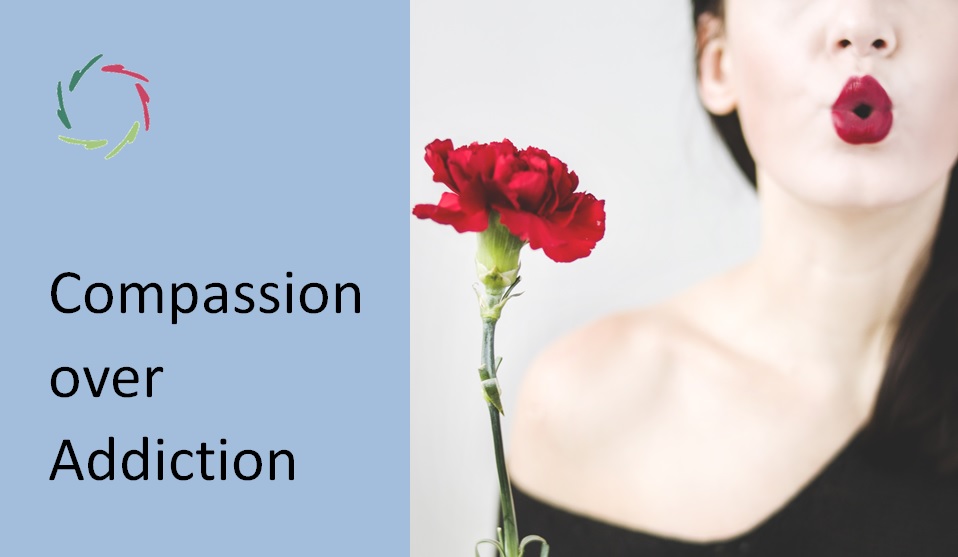38. An Addiction is No ‘Bad Habit’

You are doing everyone a favor by pointing at the ‘circle of addiction’.
Many people who are seriously addicted, see this as a ‘bad habit’. They say, “I will stop smoking if I feel like it, but that is not the case yet.” Okay, but what if this “I do not feel like stopping yet” is part of the addiction itself? In other words, one would not stop the ‘bad habit’ just because one is suffering from an addiction. So, the ‘bad habit’ is just a poor excuse.
In ‘habit’ there is conscious control. In ‘addiction’ there is loss of conscious control.
If you realize you have a ‘bad habit’, that means by definition that you do something you do not want to, while in principle you are able to ‘not do it’. In other words: you are unable to control the situation. You can also see it this way: a ‘bad habit’ of smoking IS an addiction.
This way, every ‘bad habit’ is under suspicion.
Every smoker who sees his smoking behavior as a ‘bad habit’ should actually be seen as an addict, whether he realizes it or not. If ‘conscious insight’ is an important step in the way he learns to deal with his addiction, it is worth noting here. At least do not let a poor excuse stand in the way of an improvement.
Circle of addiction
Circle of addiction: what attracts you underlying (nonconsciously), is not what is being achieved. On the other hand: what is being achieved, is not what attracts but what pretends to do so. Result: if one doesn’t get what one really wants, one wants more and more what pretends to attract us. More and more and more… Circle of addiction.
A psychological addiction has always to do with the nonconscious.
So: with conscious control you do not reach wholeness. A habit already has something of: ‘without thinking a lot’. In any case, this is close to a nonconscious pattern. By naming something like smoking a ‘bad habit’, one indicates to indeed think about it (since one is judging it as ‘bad’) and still do it. The nonconscious part of the pattern is therefore bigger. Well, terms can be misleading. A ‘black eye’ is not an eye that is black. The tissue surrounding the eye is black. A ‘bad habit’ is often not a habit but an addiction.
It is in particular the circle of addiction that makes an addiction from a bad habit.
This is the ‘missing link’. Without this link a bad habit just keeps being a bad habit. One can, for example, have the bad habit of not brushing one’s teeth in the evening. This doesn’t mean that one is addicted to not brushing one’s teeth. There is no circle. One just dreads doing the effort and simply doesn’t do it.
Differential diagnosis
A differential diagnostic test between ‘bad habit’ and ‘addiction’? One can easily do it by avoiding the ‘bad behavior’ during a week. In case of a ‘bad habit’ this is easy to realize since it is a purely conscious event. In case of an ‘addiction’, it’s a different story. Out of respect for oneself, this test is the least one can do to show what one is up against. Besides, if it’s not easy to even perform this simple test, one already knows that ‘bad habit’ is indeed a poor excuse.
Can a bad habit initially, whether or not for a long period, just be a bad habit and only then turn into an addiction? Basically it always happens in that order.
Nothing starts as an addiction.
So, it is logical to exercise caution in EACH bad habit, even in the early stages. Also preventively, by showing to vulnerable persons how the principle works. Once the principle is known and the differential diagnosis is made, it will be difficult for the addiction to hide. Many young people have ‘bad habits’ and don’t know any better. For example: from the bad habit ‘excessive eating’ to the addiction ‘excessive eating’. One can in each case only become psychologically addicted to something behind which something deeper is hidden. Which also means: the more it is someone’s nature to live as a ‘total person’, the smaller the risk of addictive behavior.
We know what we have to do.


